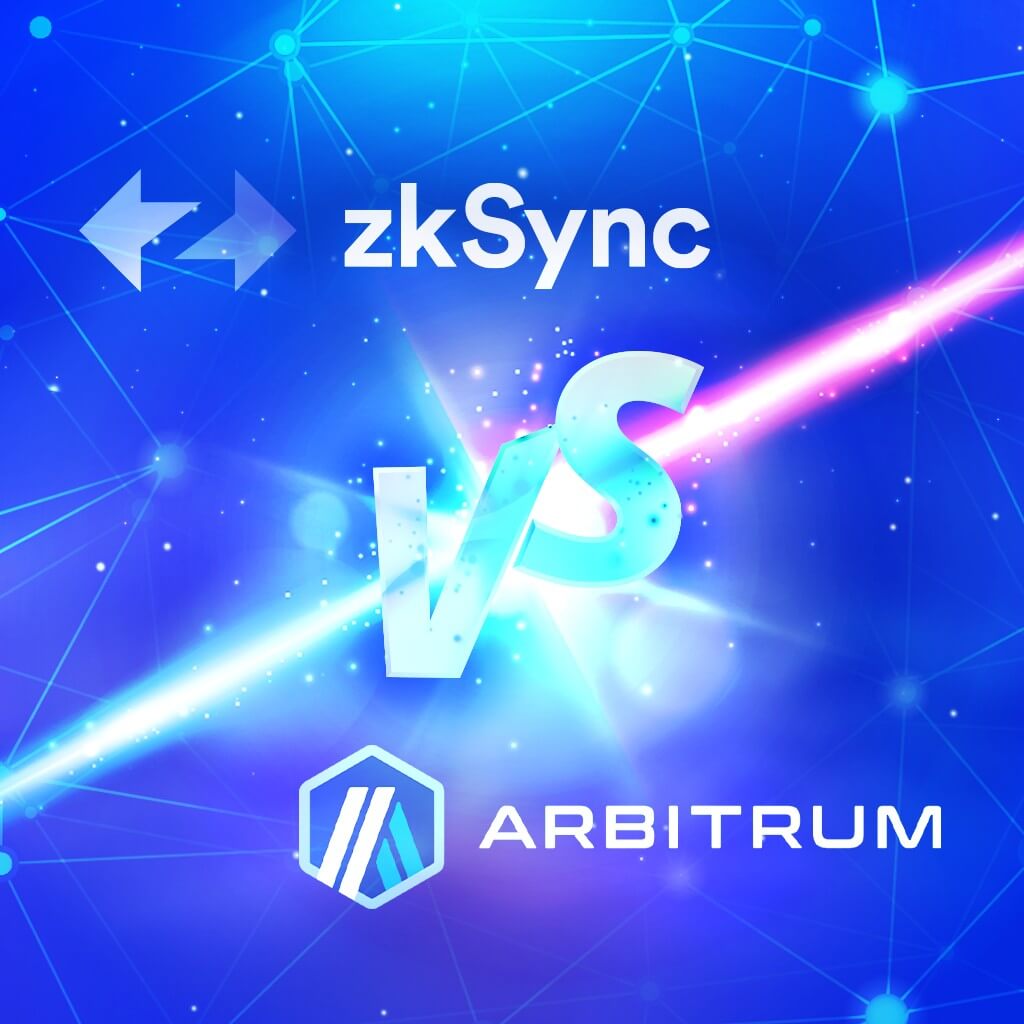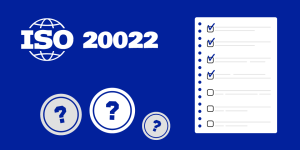As Ethereum continues to gain momentum as a leading blockchain platform for decentralized applications (DApps), the need for scalable solutions has become increasingly apparent. Ethereum’s native network has faced congestion and high transaction fees, prompting layer 2 scaling solutions to emerge. The matter of zkSync vs Arbitrum has garnered significant attention as promising options to address Ethereum’s scaling limitations.
What is a layer-2 solution?
Layer-2 solutions, also known as layer-2 scaling solutions, are a set of protocols and technologies developed to address the scalability limitations of blockchain networks, specifically Ethereum and Bitcoin. These solutions aim to improve the transaction throughput, reduce fees, and enhance the overall user experience by processing transactions off-chain while leveraging the security and decentralization of the underlying layer 1 blockchain.
Layer-2 solutions handle transaction processing, smart contract execution, and data storage outside the main chain. By moving these operations off-chain, layer 2 solutions alleviate the burden on the main blockchain, enabling faster and more cost-effective transactions.
There are various layer 2 solutions, including rollups, plasma chains, state channels, and sidechains. Rollups, such as optimistic rollups and zero-knowledge rollups (ZK rollups), bundle multiple transactions into a single batch and then submit a summary of those transactions to the main chain. Plasma chains and state channels offer similar functionality by providing frameworks for off-chain transaction processing and periodic settlement on the main chain. On the other hand, sidechains are independent blockchains that operate alongside the main chain, processing transactions and periodically syncing with the main chain.
The development and adoption of layer 2 solutions are crucial for blockchain networks to accommodate the growing demand for decentralized applications (DApps), reduce congestion, and provide a better user experience. These solutions unlock the potential for broader adoption of blockchain technology by overcoming the limitations of scalability and transaction costs associated with layer 1 chains.
Understanding zkSync
zkSync works as a layer-2 scaling solution built on top of the Ethereum blockchain, utilizing zero-knowledge rollups to enhance transaction efficiency and scalability while maintaining a high level of security.
At its core, zkSync bundles multiple transactions into a single proof, which it submits to the Ethereum mainnet for verification. This process allows for aggregating numerous transactions, significantly reducing the load on the Ethereum network and improving overall scalability.
Here’s a simplified step-by-step overview of how zkSync works:
Transaction Aggregation: Users initiate transactions on the zkSync layer-2 network by signing them with their private keys. These transactions are collected and batched together into a rollup.
Zero-Knowledge Proof Generation: zkSync utilizes zero-knowledge proofs, a cryptographic technique, to generate evidence that attests to the validity of the entire batched transaction rollup. These proofs ensure that the transactions are correct without revealing any sensitive information.
Verification on Ethereum Mainnet: The protocol submits the generated zero-knowledge proof to the Ethereum mainnet for verification. Ethereum validators validate the proof, ensuring the correctness and integrity of the batched transactions.
Commitment to Ethereum: Once the proof is verified, a cryptographic commitment, known as a “zk-rollup smart contract,” is created on the Ethereum mainnet. This commitment represents the batched transactions and serves as a cryptographic guarantee of validity.
Security and Finality: The security of zkSync transactions is maintained by leveraging the underlying security of the Ethereum network. Once the zk-rollup smart contract is created, Ethereum’s consensus mechanism considers the transactions finalized and secured.
ZkSync 1.0 and ZkSync 2.0
It’s worth noting that zkSync continues to evolve and introduce updates to enhance its capabilities and support a wide range of decentralized applications (dApps) and smart contracts on the layer-2 network.
The initial version, zkSync 1.0, was launched in June 2020 and focused on providing fast and cheap transactions by batching and submitting transaction proofs to the Ethereum mainnet. However, it did not support smart contracts at that time. Despite this limitation, zkSync 1.0 gained significant traction, reaching over $170 million in Total Value Locked (TVL) at its peak.
In October 2022, zkSync 2.0, also known as zkSync Era, was introduced as an upgrade to zkSync 1.0. It brought several improvements, including support for smart contracts through compatibility with the Ethereum Virtual Machine (EVM) and the ability to compile code written in languages like Rust, Yul, Vyper, and Solidity. This upgrade expanded the capabilities of zkSync and made it more appealing to developers.
In February 2023, zkSync 2.0 was rebranded as zkSync Era, marking a significant milestone in the zk-rollup space. It became the first zkEVM (zero-knowledge Ethereum Virtual Machine) to launch on the mainnet. This development positioned zkSync Era as a promising alternative to other layer-two solutions like Arbitrum and Optimism, which primarily utilize optimistic roll-up technology.
zkSync Era officially opened on the mainnet on March 24, 2023, allowing users to leverage its benefits, including improved scalability, faster transaction speeds, and lower gas fees. It represents a new wave of zkEVM-related projects and signifies the beginning of a potential zk-rollup season.
Regarding technical advancements, zkSync 2.0 aims to achieve a throughput of over 100,000 transactions per second (TPS) once ETH2 data sharding becomes available. This scalability improvement is made possible by zkPorter, a protocol that combines zk-rollups with sharding. By integrating zkPorter, zkSync will process a significantly higher volume of transactions while maintaining low gas fees on the layer-two blockchain.
Cons
Implementing zkSync can be complex and costly due to its reliance on ZKPs. Integrating zkSync into applications may require additional resources and expertise, which can challenge developers.
Another potential drawback is related to privacy and data availability. While zkSync’s use of ZKPs provides strong cryptographic security, it may limit transparency and raise concerns about data availability. You should consider the trade-offs between privacy and transparency depending on the specific use cases and requirements.
Exploring Arbitrum
Arbitrum is an Ethereum layer-2 scaling solution that operates as an optimistic rollup. It aims to address the scalability limitations of the Ethereum network by executing transactions off-chain while leveraging the security of the Ethereum mainnet. Here’s an overview of how Arbitrum works:
Transaction Aggregation: Arbitrum aggregates multiple transactions into a batch called a rollup. These transactions occur off-chain, which reduces the computational load and congestion on the Ethereum network.
Transaction Verification: Once bundled into a rollup, validators verify the correctness of the transactions and ensure that they adhere to the rules defined by the Ethereum protocol. This validation process is crucial for maintaining the security and integrity of the network.
Rollup Submission: After the transactions are validated, a summary or proof of the rollup is submitted to the Ethereum mainnet. The summary contains compressed information about the transactions, reducing the data size and gas costs compared to executing each transaction on the mainnet individually.
Execution and Finality: The Ethereum mainnet verifies the submitted roll-up summary and executes the necessary computations to finalize the transactions. This process ensures that the results of the transactions are recorded on the Ethereum blockchain, providing security guarantees.
Dispute Resolution: In the optimistic rollup model, there is an assumption that most transactions are valid. However, users can raise challenges in disputes or potential fraud. Conflicts trigger a process where they must present evidence, and the Ethereum mainnet acts as a judge to resolve the dispute. This mechanism adds a layer of security and ensures the correct execution of transactions.
Cons
While Arbitrum employs multiple fraud proofs to enhance security, this can result in slightly slower transaction execution times. The need for fraud-proof introduces additional verification steps, which may extend the settlement time for transactions compared to other solutions.
As Arbitrum evolves and matures, updates and advancements in the Arbitrum ecosystem may alleviate these limitations and enhance the platform’s overall performance.
Comparative Analysis
Performance comparison
zkSync and Arbitrum are two prominent layer 2 solutions for Ethereum that enhance the network’s scalability and transaction speeds while maintaining security and decentralization. zkSync, a zero-knowledge roll-up solution, can achieve transaction speeds of up to 2,000 transactions per second (TPS) with low fees per transaction. On the other hand, Arbitrum, an optimistic roll-up solution, boasts higher transaction throughput, reaching up to 40,000 TPS, and offers near-instant finality. These solutions provide significant improvements in transaction performance compared to the Ethereum mainnet.
Gas fees and cost savings
Both zkSync and Arbitrum aim to address the high gas fees associated with the Ethereum network and provide cost-effective alternatives for users. zkSync achieves gas fee reductions of up to 100x, while Arbitrum reduces gas fees by 10-50x. These substantial reductions in gas fees translate into significant cost savings for users, making transactions more affordable and accessible. By optimizing transaction costs, zkSync and Arbitrum contribute to a more efficient and economical user experience.
Decentralization
Decentralization plays a crucial role in both zkSync and Arbitrum to ensure the integrity and security of the networks.
zkSync achieves decentralization through randomly-selected validators who collectively confirm and bundle transactions. This approach prevents any single entity from controlling the network, reducing the risk of manipulation or fraud. By distributing the validation process among multiple validators, zkSync maintains a decentralized architecture that promotes trust and transparency.
Arbitrum takes a similar approach to decentralization but employs a more intricate system. The network relies on a diverse group of validators who contribute to processing and validating transactions. Each validator has a stake in the security and success of the network, which incentivizes them to act honestly and maintain the system’s decentralization. This multi-validator model ensures that no single entity can monopolize the validation process, preserving the network’s decentralized nature.
Security Level
zkSync and Arbitrum employ distinct security mechanisms to ensure the integrity and safety of transactions. zkSync relies on zero-knowledge proofs (ZKPs) to guarantee security and privacy. Using ZKPs, zkSync ensures that transaction details remain private while maintaining validity. On the other hand, Arbitrum utilizes fraud proofs to achieve security. While both solutions prioritize safety, their specific security assurances and trade-offs differ due to their unique approaches. Ongoing audits and security assessments continuously enhance the security of both zkSync and Arbitrum.
Developer ecosystem and community support
zkSync and Arbitrum have fostered vibrant developer ecosystems and garnered considerable community support. zkSync provides a developer-friendly environment with software development kits (SDKs), application programming interfaces (APIs), and comprehensive documentation. These resources facilitate developers in building and deploying scalable applications on the zkSync network. Similarly, Arbitrum has attracted significant developer interest and offers compatibility with the widely used Solidity programming language and other languages that compile to Ethereum Virtual Machine (EVM) bytecode. The availability of robust developer tools, resources, and active community support is crucial for the growth and adoption of both zkSync and Arbitrum.
Use Cases
ZkSync is well-suited for use cases that involve frequent transactions with low fees. It is ideal for applications such as micropayments, remittances, and decentralized finance (DeFi) transactions. ZkSync offers low gas fees and high transaction throughput, efficiently handling many transactions. Developers can use it for building decentralized exchanges (DEXs) that operate off-chain for order book management and on-chain settlement, enhancing the trading experience by reducing fees and improving transaction speed.
On the other hand, Arbitrum is a suitable choice for a wide range of use cases that require smart contract functionality. It is handy for decentralized applications, games, and DeFi protocols. Arbitrum is fully compatible with the Ethereum Virtual Machine, allowing developers to deploy existing Ethereum smart contracts to Arbitrum with minimal modifications. This compatibility simplifies the migration process for developers who want to move their projects to layer-2 without extensive code changes.
It is worth mentioning that ZkSync has the zkSync zkEVM project, which combines zero-knowledge proofs (zk) and the Ethereum Virtual Machine. This project enables scalable and privacy-preserving smart contracts on the Ethereum network. Users can benefit from the speed and cost advantages of zkSync’s off-chain batching while leveraging the privacy and security provided by zkEVM’s zero-knowledge proofs. This integration expands the possibilities for building dApps that require scalability and privacy, making zkSync zkEVM an exciting innovation in the blockchain space.
Conclusion
Ultimately, the decision between zkSync and Arbitrum rests on understanding the unique requirements of each use case and selecting the solution that best aligns with the project’s goals. Both platforms contribute to advancing decentralized finance and the broader adoption of blockchain technology, offering exciting possibilities for the future of scalable and efficient decentralized applications.





